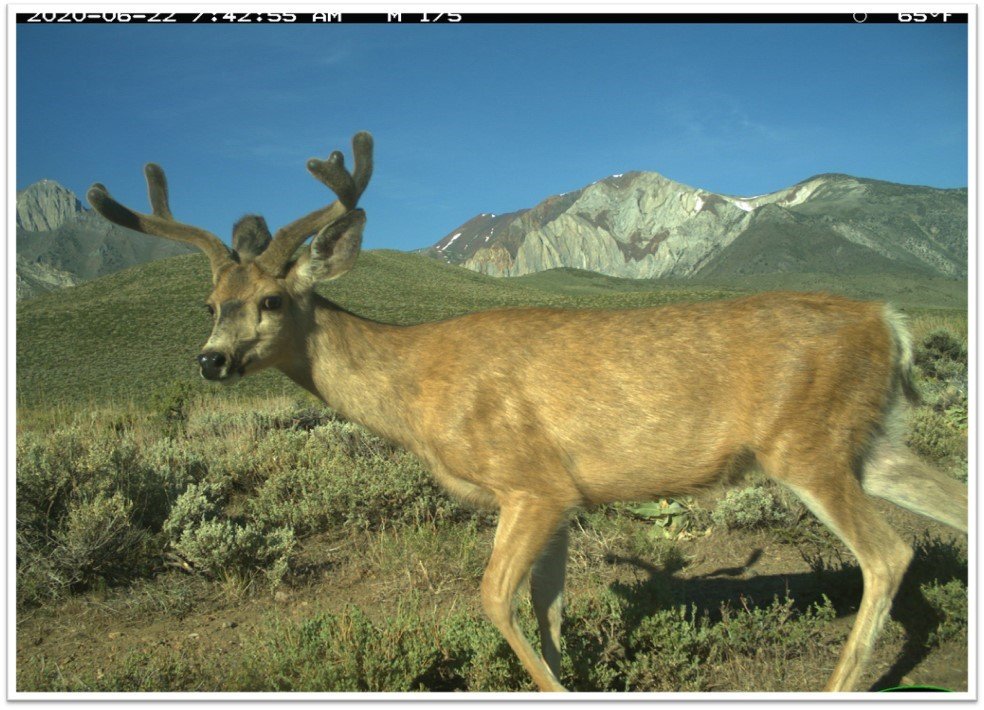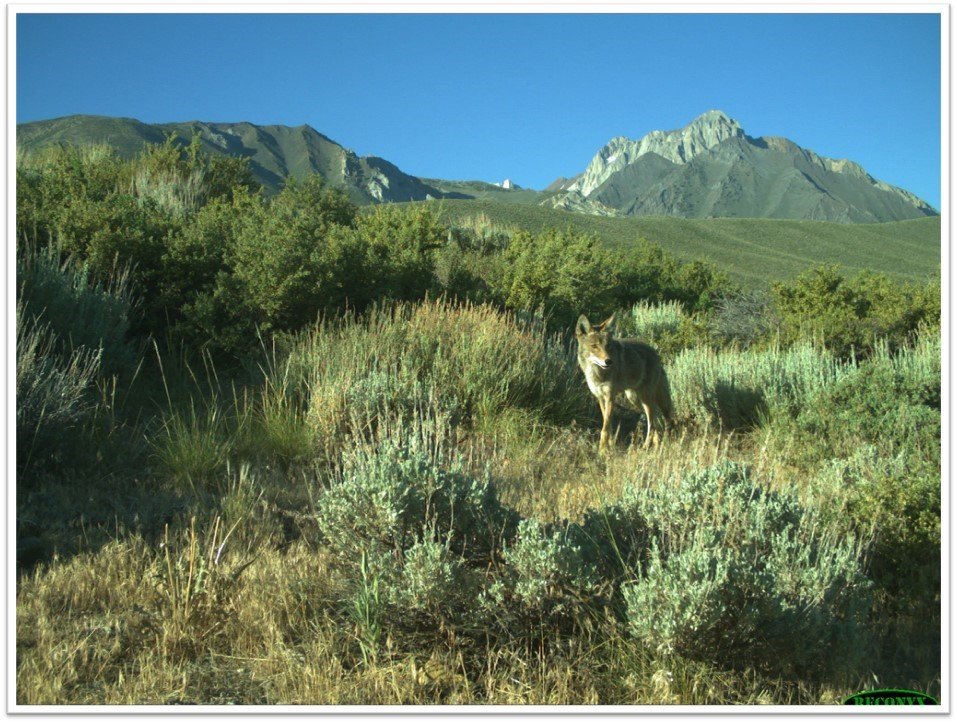California Approves Millions for Wildlife Crossing Project Near Mammoth Lakes
California’s Wildlife Conservation Board (WCB) recently unanimously approved a $3.17 million grant for the Mammoth Lakes 395 Wildlife Crossing Project, which will increase habitat connectivity along highway 395 and reduce wildlife-vehicle collisions between Mammoth Lakes and Crowley Lake.
Our partners at Pathways for Wildlife install camera traps to monitor wildlife movement at another project site along Highway 395, a stretch spanning from the California-Nevada border to Honey Lake.
Led by Caltrans District 9 and the Eastern Sierra Wildlife Stewardship Team, a coalition of agencies, NGOs, local governments, and Tribes, this funding will support the environmental review phase which includes technical studies, documentation (CEQA and NEPA), public comment, permitting, and preliminary project designs. This is a major step forward for this project, which finished its scoping phase in 2020. Once the environmental reviews are completed, the project will go into the design phase before breaking ground. Ultimately, the goal of this project is to add or enhance several undercrossings, build two wildlife overcrossings, and add fencing to direct wildlife to crossing structures and off of the highway.
Linear infrastructure like roads and highways not only fragment habitats and harm wildlife, but lead to wildlife-vehicle collisions that are a huge risk to public safety. Highway 395 is the only major thoroughfare running north-south along the eastern side of the Sierra Nevada mountains range and bisects migration corridors for numerous deer herds. The stretch of highway in the project area divides important habitat for mule deer, sage-grouse, and bears and is a wildlife-vehicle collision hotspot, averaging 57 deer collisions each year. Projects like the Mammoth Lakes 395 Wildlife Crossing Project have the potential to reduce wildlife-vehicle collisions by up to 98%, creating safer conditions for drivers and helping maintain healthy ecosystems.
(Left): Mule deer traveling along the Right of Way fence line adjacent to the highway. (Right) Coyote along side Highway 395. Credit: CDFW Bishop Office
Wildlands Network is leading a similar project effort on a stretch of Highway 395 further north, which spans from the California-Nevada border to Honey Lake, and is also pursuing funding from the WCB. Currently known as the Hallelujah Junction Wildlife Crossing Project, this stretch of highway is a barrier for mule deer migration between the lowlands of Nevada and the northern Sierra Nevada and has been identified as a wildlife-vehicle collision hotspot.
The Wildlife Conservation Board is a funding entity within the California Department of Fish and Wildlife that provides financial support for on-the-ground conservation initiatives. Large-scale infrastructure projects, like wildlife crossings, require substantial amounts of funding over long time periods. Funders like WCB are critical for creating environmentally-conscious infrastructure that will have long-lasting benefits to people and nature.
More Resources:
California Action Plan Update 2020
WCB Nov. 15 Meeting Agenda
WCB Nov. 15 Meeting Presentation Slides




